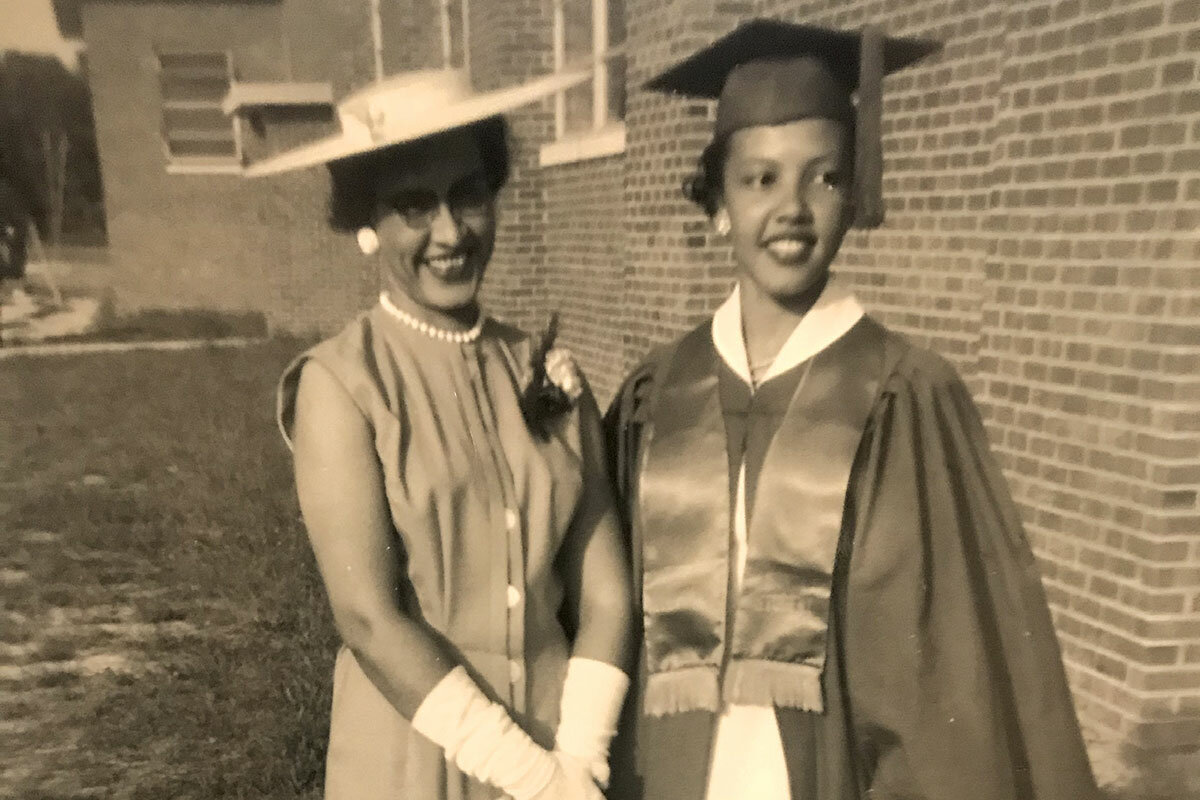One of NASA’s ‘hidden figures’ tells her own story
Loading...
Five years ago, a bestselling book and then an acclaimed film introduced the world to the “Hidden Figures,” a group of Black female mathematicians who played crucial roles at NASA during the Cold War space race. Research scientist Katherine Johnson, whose calculations were critical to major missions, became a hero to millions. Ms. Johnson, a centenarian who died in 2020, wrote about her life for the new memoir “My Remarkable Journey,” with help from her two daughters, Joylette Goble Hylick and Katherine Moore. Ms. Hylick spoke with the Monitor recently.
Q: What did your mother think when she became famous?
She’d say, “I was just doing my job, and I don’t know what all this is about.” Those ladies didn’t do their work to get famous. They did it because they could, because it was challenging, because they felt they were representing our community. And especially because they knew we were in a race against the Russians in the early years of the space program. They had a duty to their country.
Q: How did she deal with obstacles like racism and sexism?
The barriers she had, the hiccups and trauma that she lived through the course of her entire life? She just seemed never to let them bother her. She would not ignore them, and she didn’t cower. But she’d figure out how she could get what she wanted in spite of it. Her attitude was “Oh, well, if I can’t do it this way, I’ll do it that way.” I was in college during a time where you had lunch-counter demonstrations [against segregation]. She didn’t want us to get involved because we could get hurt and because, as she told me, if you want to work at NASA, you can’t have a record. Her message was: Do it another way, demonstrate another way.
Q: How did she develop her blend of resilience and generosity?
She wasn’t intimidated, but she also didn’t look down on people. I give all credit to my granddad. We kept saying we’ve got to write a book because we want people to know him. Granddaddy told her when she was little that “nobody in this town is better than you are, and you are no better than anybody in this town.” You’ve got too many people out here who’ve got to have someone to look down on. Why? Why would you be more important than me? You breathe, and I breathe. You work, and I work.
Q: Do you think she found the balance between being aggressive and being assertive?
Yes. She was assertive but not aggressive. She believed that if you’re aggressive, you won’t get as far because you’re going to get a counterreaction. I can’t remember seeing her just boiling mad unless it was about something somebody did that didn’t make sense.
Q: How did she develop an interest in mathematics and numbers?
They say she started counting on Day 1. She counted everything: the stars, dishes and silverware, steps. She had a fascination with numbers.
Q: What can we learn from her?
Her philosophies were to be prepared, love what you’re doing, follow your passion, and do your best. You’d never hear her say anybody told her that. She just knew it, and she did what she expected us to do. It wasn’t a teaching thing. It’s about watching: She understood that kids do what you do quicker than what you say. She also said to find out what it is you’d like to do. If you work hard at it, it won’t be a job. She said she never worked a day in her life at NASA. She loved it because as soon as one thing was finished, they would be on to something else.
Q: Did she like being a celebrity late in life?
The highlight of her career was meeting President Barack Obama. She’d always say, “He kissed me on my cheek!”
Q: Did she want to go to space herself?
[An astronaut friend] was working on a project to go to Mars and asked, “Would you like to go with me?” Mom said she would in a heartbeat. This year, Northrop Grumman [an aerospace company] named a spacecraft after her. They put a photo of her on a flag so that when the spacecraft attached to the International Space Station [to provide supplies], the first thing the astronauts would see would be this picture of her. When they asked me what I thought, I cried. She got to go to space anyway!






